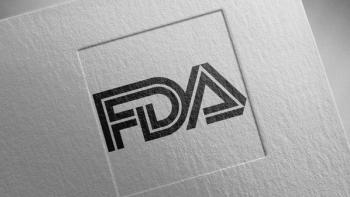
ADA: Cord Blood Infusions Temper Course of Early Type 1 Diabetes
CHICAGO -- Umbilical cord-blood infusions may ameliorate the serious complications of type 1 diabetes, said investigators involved in early clinical trials.
CHICAGO, June 26 -- Cord-blood infusions may ameliorate the serious complications of type 1 diabetes, said investigators involved in early clinical trials.
Children who received infusions of autologous cord blood had lower average glycosylated hemoglobin (HbA1c) levels at six months than diabetic controls treated with intensive insulin only, reported Michael J. Haller, M.D., of the University of Florida in Gainesville, and colleagues,
"The patients who received autologous cord blood infusions had better glycemic control, as evidenced by lower HbA1c, and that was statistically significant, and we also saw that they had lower insulin requirements compared with controls, also statistically significant," said Dr. Haller.
Co-author Desmond A. Schatz, M.D., also at the University of Florida, commented that "this is really the first cellular therapy in which we're taking one's own cells that are nave to the potential environmental insult that triggers this disease."
But even if the therapy proves its worth, it will likely be available only those who can afford the costs of collection of cord blood, which range from about ,000 to ,500, plus annual storage fees of to , according to Dr. Haller.
In fact, the study was prompted by a question from a financier who had a three-year old child recently diagnosed with diabetes. He and his wife had banked their child's blood on the off chance that they would need it, and the father called Dr. Schatz to ask if it could be used to treat diabetes.
The authors hypothesized that because umbilical cord blood is rich in stem cells and regulatory T cells, it might over time help to enhance or restore metabolic control in children in the early stages of type 1 diabetes.
They reported data on the first eight of 11 children with diabetes who received cord-blood infusions. The average age at infusion was 5.29 years + 1.8 (range 2.4 - 7.3), with a mean duration of diabetes of about 10 months. The average HbA1c level at baseline was 6.3% + 0.7 (range 5.2 - 7.5%).
Controls were randomly selected intensively treated patients with type 1 diabetes, close in both age and duration of disease to the infusion-treated patients.
The treatment group were given an average of 1.9x107 (range 2.8x106 - 3.6x107) nucleated cells per kilogram, with an average 96% cell viability.
The investigators used unpaired t-tests to compare HbA1c and total daily insulin use between the groups from diagnosis to six months after infusion.
They found that the children who received cord blood infusions had lower average HbA1c levels at six months compared with controls, at 7.0% +1.77% for the infusion group over 28 total measurements, versus 8.04% + 0.8 over 108 measurements for controls (P=0.0031).
Insulin requirements in the children who received cord blood were also lower, with an average daily total of 0.45 + 0.23 U/kg compared with 0.69 + 0.24 for controls (P
Newsletter
Enhance your clinical practice with the Patient Care newsletter, offering the latest evidence-based guidelines, diagnostic insights, and treatment strategies for primary care physicians.



















































































































































































































































































